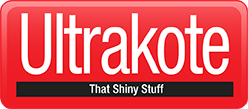Printing and Production Tips
If you feel Ultrakote may be the solution you’ve been looking for and you’re ready to give it a try, please observe the following tips to make your printed pieces as effective as possible.
Use UV Coatable Inks
Consult your ink supplier and request UV coatable inks when specifying Ultrakote. When a press sheet is printed on both sides, use UV coatable inks on each side, even if only one side is to be coated with Ultrakote.
Coated Paper Stock
Ultrakote bonds with the coating of paper. Lesser grades of paper stock will coat with good results, but those with cast coating (such as Kromekote) do not coat well.
Spot UV Coating
Spot UV Coating can be used for projects including, but not limited to the following:
• Packaging
• Folding cartons and die-cut folders.
• Special use areas, including uncoated areas for glue tabs.
• Spot Coating to achieve special design effects, such as high-lighting areas of photos.
Finished Bindery
Die-cutting, scoring, and most other finished bindery procedures follow the application of Ultrakote UV Coating. Foil Stamping, however, is done prior to coating as the foil may not adhere to Ultrakote.
Press Powder
Press powder greatly reduces the effectiveness of Ultrakote. Excessive powder residues will lessen the sheen and scuff protection of Ultrakote. A dusting run by the printer prior to coating can be beneficial.
Stock Weight Capabilties
Flood Coating: 70# coated book - 48 pt. coated board
Spot Coating: 70# coated book - 40 pt. coated board
Sheet Sizes
Flood Coating Maximum: 40” x 51” Minimum: 8 1/2” x 11”
Spot Coating Maximum: 30” x 40” Minimum: 13” x 19” (Gripper 1/2” min.)
Warning!
Due to the many variables of the printing process (inks, paper stocks, drying characteristics, pigments, varnishes, and end use of printed material), Ultrakote may affect certain projects with unanticipated results. Ultrakote’s financial responsibility is limited to the cost of the coating.
